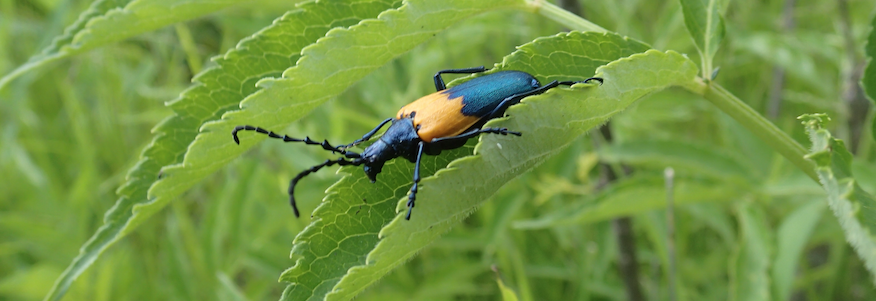As spring rains give way to warm, sunny days, the meadows of Mount Rogers come to life with the emergence of a plethora of insects. Among these creatures is a beetle with a striking iridescent blue body and a yellow-orange wash across its elytra (forewings). The elderberry borer beetle (Desmocerus palliatus) also has knots running up its long antennae, lending to its alternate name, cloaked knotty-horned beetle.
This species of long-horned beetle is an obligate specialist, requiring elderberry plants for larval development. Eggs are laid near the base of the stem. After hatching, larvae burrow into the stem and down to the root system. Here, they feed until they are ready to form a pupal cell in the pithy stem tissue. Maturation takes two years. As soon as the mature female emerges in the spring, her scent begins to draw in males and mating takes place immediately.
This individual was spotted near a cluster of elderberry plants in a Konnarock meadow.
Very distinctive, the elderberry borer was featured on a US postage stamp in 1999.









